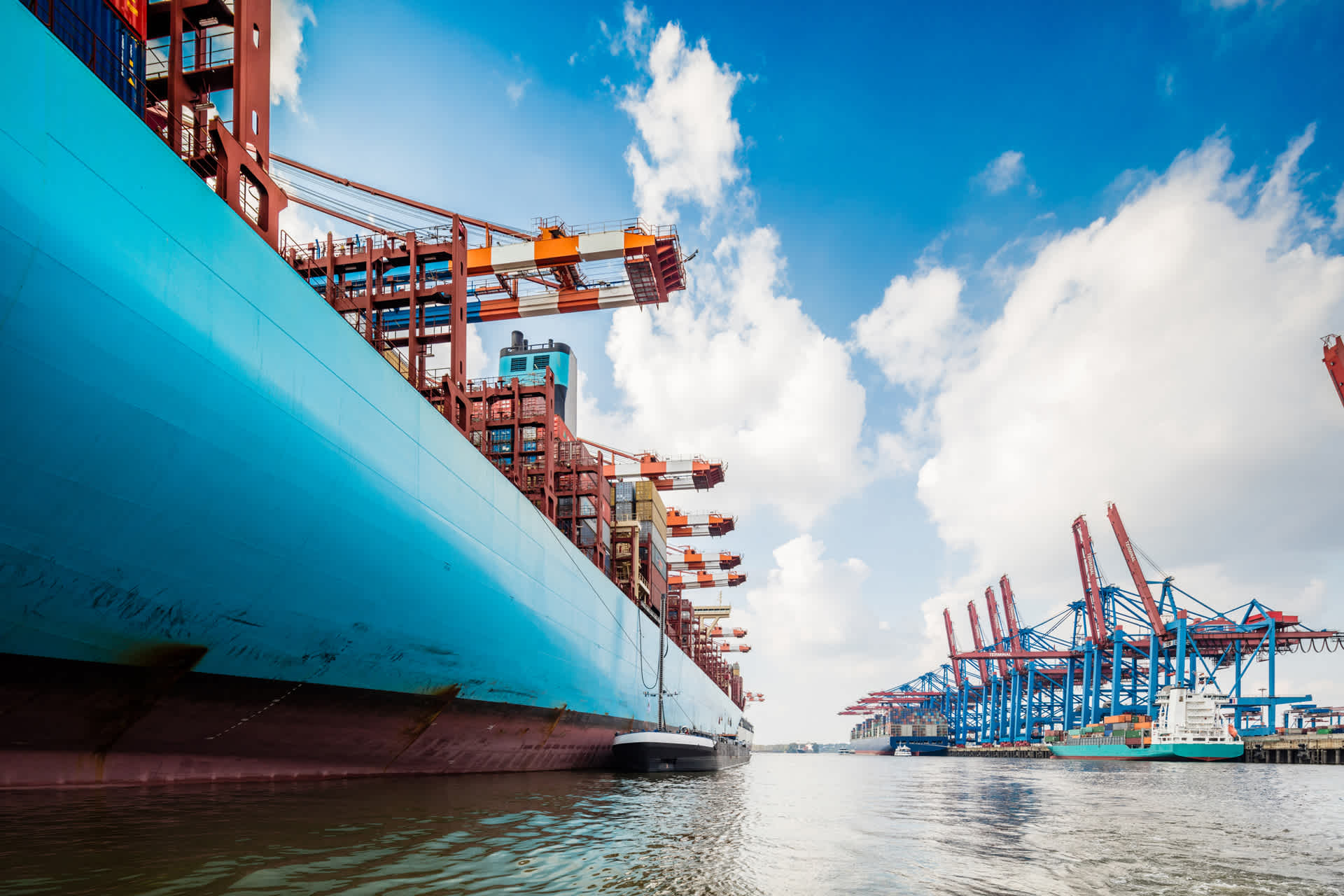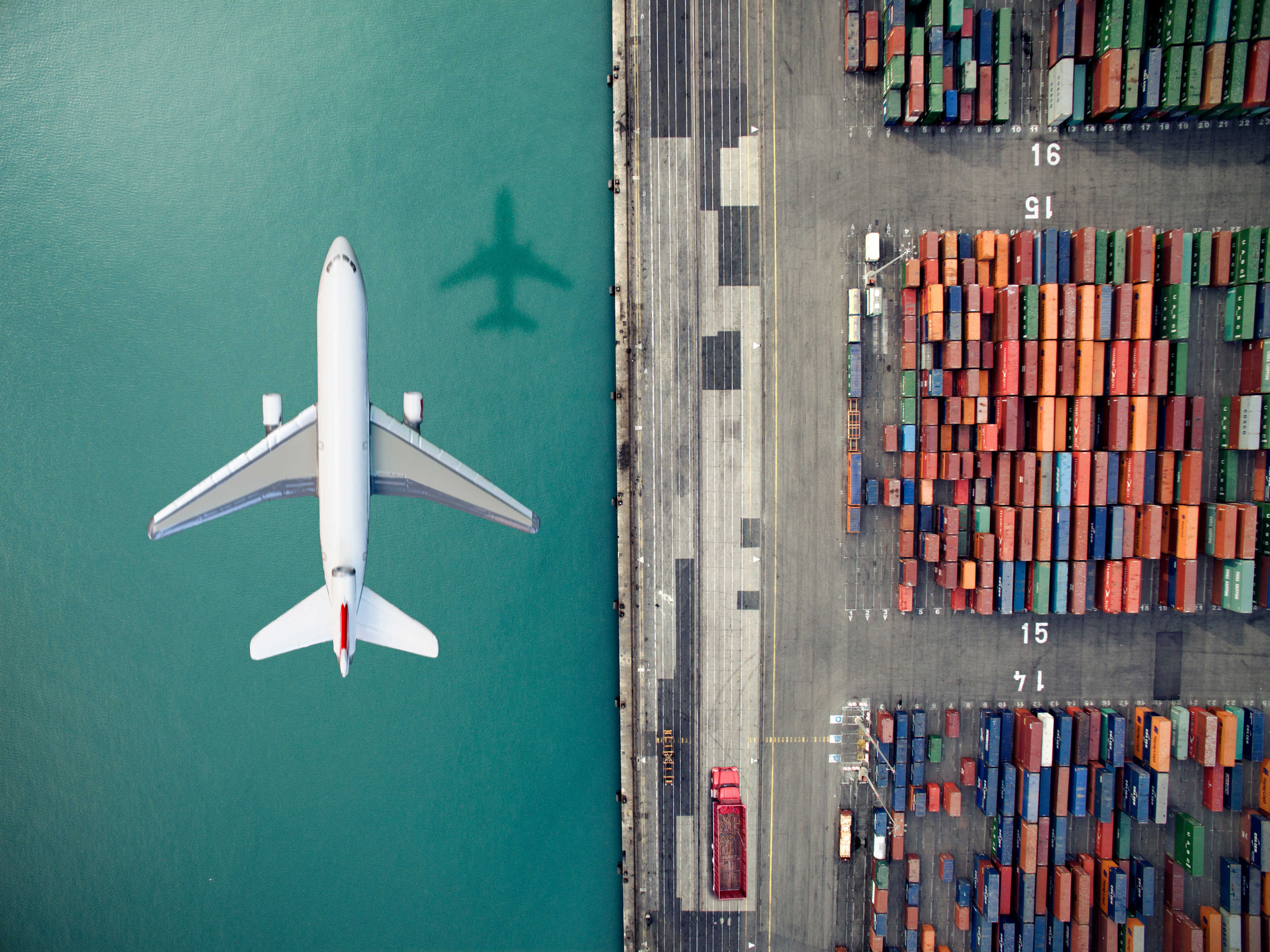Global Logistics Update
Freight Market Update: October 26, 2021
Ocean and air freight rates and trends; customs and trade industry news plus Covid-19 impacts for the week of October 26, 2021.
Freight Market Update: October 26, 2021
Ocean Freight Market Update
Asia → North America (TPEB)
- Demand outlook remains strong, although past peak for 2021 as any just-in-time cargo for the holidays will now likely need to move via quicker modes of transport. Whether TPEB rates will continue to stay flat, further reduce, or increase again remains unclear. Carriers continue to report record earnings and expect elevated demand so long as inventories remain insufficient for retailers. Congestion is expected to remain severe at US ports (~80 container ships currently dwelling at LA/LB).
- Rates Carriers expected to extend most standard rates for the first half of November. Rate levels remain elevated and premium demand outlook is strong.
- Space Critical
- Capacity/Equipment Critical/Severe Undercapacity
- Recommendation Continue to book well in advance (at least 4 weeks) from CRD to target ETD for best chance of hitting timelines.
Asia → Europe (FEWB)
- Space and equipment crunches continue as market demand consistently exceeds supply, and rates have been very high for a long period. The overall space situation is worsened by blank sailings and poor equipment availability. Carriers are overcommitted and are limiting booking acceptance or rolling shipments. With continuous vessel delays and shifts, schedule reliability is very low. Power shortages are affecting factory production up to a certain extent and causing more changes in shipping plans.
- Rates Rates remain at a record high level. However, they have been stable throughout October as well as going into November. There are some slight downward rate revisions by a few carriers.
- Space Extremely critical space situation
- Capacity/Equipment Severe equipment shortage across all Asia origins.
- Recommendation Book at least 4 to 5 weeks prior to CRD. Consider premium options, which may be limited. Be flexible in regard to equipment.
Europe → North America (TAWB)
- Congestion at LAX/LGB continues to increase with ~80 vessels in line for berth. Actions of schedules have been taken by shipping lines. Congestion at USEC ports is still impacting mainly vessels going to Savannah. Alternative ports have been added to help the situation.
- Rates GRI October 1 implemented. Rates will stay strong for all Q4 2021
- Space Critical
- Capacity/Equipment Capacity remains tight for both North Europe and Mediterranean services. Better equipment availability at port; shortages remain at inland depots.
- Recommendation: Book 5 or more weeks prior to CRD. Request premium service for higher reliability and no-roll guarantees.
Indian Subcontinent → North America
- Global vessel berthing delays are creating ripple effects throughout the region. Empty equipment and inconsistent and/or blanked sailing schedules will continue to challenge exporters in the ISC market for the foreseeable future.
- Rates expected to maintain through 1H November
- Space remains a challenge as global congestion results in omissions and altered sailing schedules. LA/LB and Savannah are being hit the worst with berthing delays and are two very important gateways for ISC cargo.
- Equipment of all types are in deficit. Carriers are working to reposition empties while also placing large orders of new equipment. Equipment is easier to procure from the larger wet ports such as Nhava Sheva and Mundra.
- Recommendation Use premiums on urgent shipments and shipments with CRD approaching. If routing to USWC, consider rerouting to USEC. Be flexible with inland container depot (ICD) location and equipment type.
North America → Asia
- Vessel arrivals and available capacity remain fluid for USWC POLs. USEC capacity has been more readily available; Deteriorating schedule integrity in addition to creating void sailings and delays is creating significant challenges with posted earliest return dates and vessel cut-offs at the port.
- Rates Multiple GRIs announced by multiple carriers for dry and reefer cargoes throughout November expected to be implemented
- Equipment Deficits on containers and chassis are still plaguing IPI origins. Availability for standard equipment at ports has not been an issue, but any special equipment is hard to come by.
- Recommendation Please place bookings 4 to 6 weeks in advance to secure your equipment and vessel space.
North America → Europe
- There is available capacity on the TAEB trade with carriers looking for cargo from the US East and Gulf Coasts. US West Coast service to Europe is extremely tight and one service will be suspending their Seattle port of call for much of Q4. There are 3 TAEB services that will be omitting Savannah and calling Charleston or Jacksonville instead due to the significant congestion issues at the port.
- Rates to remain steady for November.
- Equipment Deficits are still plaguing IPI origins. Availability for standard equipment at ports has not been an issue, but any special equipment is hard to come by.
- Please place bookings 3 to 4 weeks in advance for East Coast/Gulf sailings and 6 weeks for Pacific Coast sailings.
Air Freight Market Update
Asia
- N.China: The market has quickly rebounded from the holiday and is trending towards a traditional peak season. With continued cancellations from major carriers, rate levels are further increasing. Major factors of peak season capacity constraints are:
- Limited terminal capacity restricting most carriers from returning to full schedules
- Key global accounts continuing to ship large volumes out of China
- Shippers rushing to catch up to the US holiday season
- For FEWB, the heavy congestion at FRA and AMS terminals is recovering very slowly and will require more time to alleviate the backlog.
- Overall, demand will greatly outweigh supply over the next few weeks and rates will maintain at high levels.
- S. China: Demand is outpacing supply and capacity is tight ex-HKG due to passenger flights still being cancelled. Some carriers have also announced flight cancellations. Rates on both TPEB and FEWB lanes continue to increase.
- Taiwan: The market continues to be tight and rates high as it trends towards a traditional peak season. Capacity is almost fully booked through the end of the month with demand particularly high to the US east coast. For volumetric cargo, the earliest departures are around the first week of November.
- SE Asia: The BKK market situation continues to be very tight with no significant changes from the prior week. Demand and rates ex-Northern Vietnam are stable and some factories are working overtime to produce cargo. Demand ex-Southern Vietnam is increasing, largely driven by key accounts and charter requests ex-SGN. Rates continue to climb and capacity is very tight. Space is fully booked through the weekend.
Europe
- Increase in project cargo in the market this week. Demand is high, but manageable. Notable increase in demand to JFK, with direct flights full this week. This has pushed rates higher into the US East Coast. If the transit time can allow, moving through a secondary hub may be beneficial. For November, expect demand to be pushed higher as we approach various holidays. Capacity should however encourage stability, as vaccinated passengers can fly from US to EU. This is promising for cargo capacity.
- Still very heavy strain on AMS and FRA ground handling terminals. FRA terminal congestion remains a challenge this week. AMS import terminals are managing better than FRA.
- No changes on Far East Eastbound this week. Capacity still manageable
- Advice continues for all trade lanes ex EU: Place bookings at least 7 days ahead of CRD for most optimal rates and routing solutions.
Americas
- US export demand has increased in the second half of October. Larger shipments from major outbound gateways can take 2 to 4 days from booking to uplift into the EU, LATAM, or Asia.
- LAX/ORD/JFK ground handlers continue to face large backlogs and are using off-airport facilities to manage the flood of inbound cargo, which has a trickle-down effect on the export side. Many have shortened their free time for storage, and have implemented new, earlier close outs for exports to accommodate longer throughput times and screening requirements.
- Rates from the US to Asia and LATAM are increasing. Rates into Europe have not experienced significant changes.
- Slightly higher transit times into top European hubs due to their current labor shortage, and high throughput time.
- Recommendation Book early considering the dwell time at airports.
Updates from Flexport's Customs & Compliance Team
CBP Commissioner Nominee Engages with Senators on Trade Issues in Confirmation Hearing
On October 19, 2021, Tucson Chief of Police Chris Magnus, President Biden’s nominee for CBP Commissioner, appeared in a confirmation hearing where senators across both parties pressed him on trade issues. Chief Magnus touched on a variety of trade topics, including antidumping and countervailing duty evasion and the importation of counterfeit goods. Chief Magnus’s final confirmation vote is uncertain.
USTR Announces End of Digital Service Tax Section 301 Tariffs for Certain Countries
The Office of the USTR announced a termination of suspended Section 301 tariffs related to digital service taxes (DST) for goods from Austria, Italy, Spain, and the UK due to a recent multilateral tax agreement. The USTR could still impose Section 301 DST tariffs on goods from India and Turkey, as the two countries are not parties to the agreement. The tariff suspension ends on November 28, 2021. The Turkish target list covers 32 tariff classifications, about $310 million worth of imports in 2019. The Indian target list covers 26 tariff classifications, about $119 million worth of imports in 2019.
Factory Output News
- Taiwan Taiwan Semiconductor Manufacturing Co. agreed to provide logistics information to the US government by Nov 8th to help solve semiconductor supply problems. Source
- Singapore SME businesses in the agriculture industry is growing to reduce reliance on imported food. Source
- India Up to 76% cotton productivity loss in the bathinda and Mansa region due to Pink Bollworm infestation, India’s Key cotton growing region. Source
- Pakistan Port Congestion in Pakistan may affect the energy supply for the nation. Source
- Vietnam Shortage of manpower continues to post a threat in logistics in Vietnam. Source
- Myanmar United States weighing on economic and political steps to handle the crisis in Myanmar. Source
Freight Market News
CA Ports Introduce Fees to Clear Space In an effort to clear cargo, the Ports of LA and Long Beach will charge ocean carriers a $100 fee for each container that overstays its allotted time. Supply Chain Dive reports the fee will apply for each container that stays more than 9 days if moving by truck or 3 days if moving by rail, and will increase by $100 for each additional day.
Read More: Port Workers Portray the Reality of Bottlenecks
Empty Containers Increase Congestion in LA According to FreightWaves, up to 2,000 containers from the Southeast and the Gulf were headed to the Port of LA to be loaded onto vessels. The containers—requested by carriers—will create additional congestion for the port terminals to receive local trucks attempting to unload empty containers.
Read More: Transpacific Shifts: Import Demand Is Changing the World’s Busiest Trade Lane
Gov. Newsome Looks to Alleviate Congestion California governor Gavin Newsome signed an executive order that will allow properties zoned to handle containers to stack up to 4 high, doubling what was previously allowed, as well as requiring the state to find other short-term methods to lighten congestion according to The Loadstar.
Read More: FWD21 Kicks Off with a Keynote on Empowering the Global Trade Ecosystem
Economic highlights from Flexport Chief Economist Dr. Phil Levy
US-Europe Digital Service Tax Deal means that threatened US tariffs against Austria, France, Italy, Spain, and the UK will not be imposed.
Separately, there was a G7 agreement on principles governing data use and digital trade.
Brexit tensions continue with fights continuing over the treatment of Northern Ireland and French-UK fishing rights. In each case, there are threats of trade actions if resolutions are not found.
US industrial production fell in September by 1.3%, with August revised downward to a fall of 0.1%. The biggest declines were in mining and utilities, but manufacturing fell by 0.4% in August and 0.7% in September. Manufacturing Capacity Utilization was 75.9% in September, the lowest since June, but still up from 72.4% in September 2020.
EU, Japan show inflation signs. Inflation expectations in the Euro Zone rose above the European Central Bank’s 2% target for the first time in seven years. Meanwhile, Japan’s core consumer prices rose 0.1% YOY in September. That may not seem like much, but the country has frequently faced deflation and these were above expectations.
Japan exports grew slowly in September. They were helped by chips but hindered by autos, with growth of 13% YOY in September, down by 26% in August.
Freight Market Update is a complimentary service from Flexport, the modern freight forwarder. If you're not already a subscriber, we invite you to subscribe here.
Please note that the information in our publications is compiled from a variety of sources based on the information we have to date. This information is provided to our community for informational purposes only, and we do not accept any liability or responsibility for reliance on the information contained herein.


